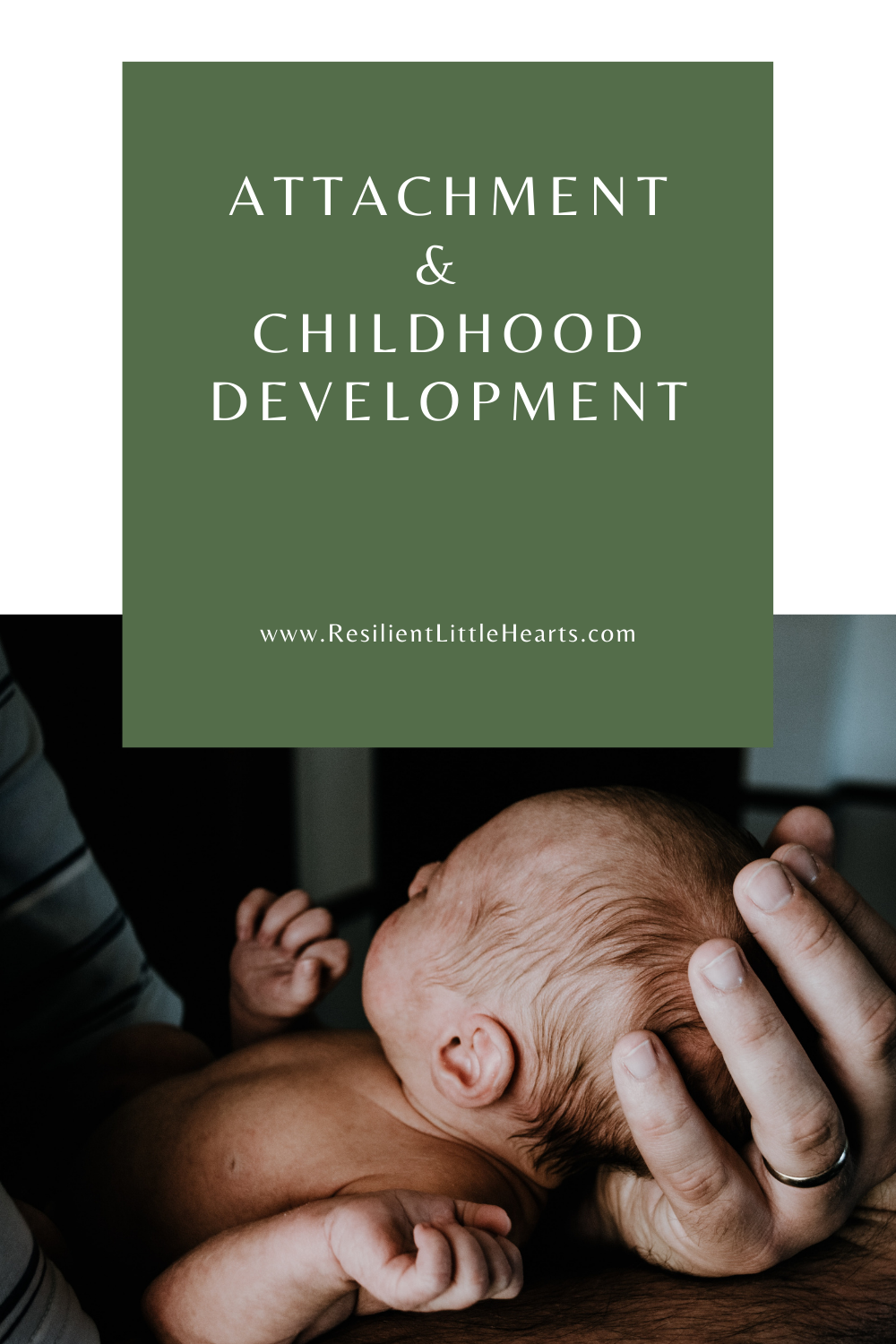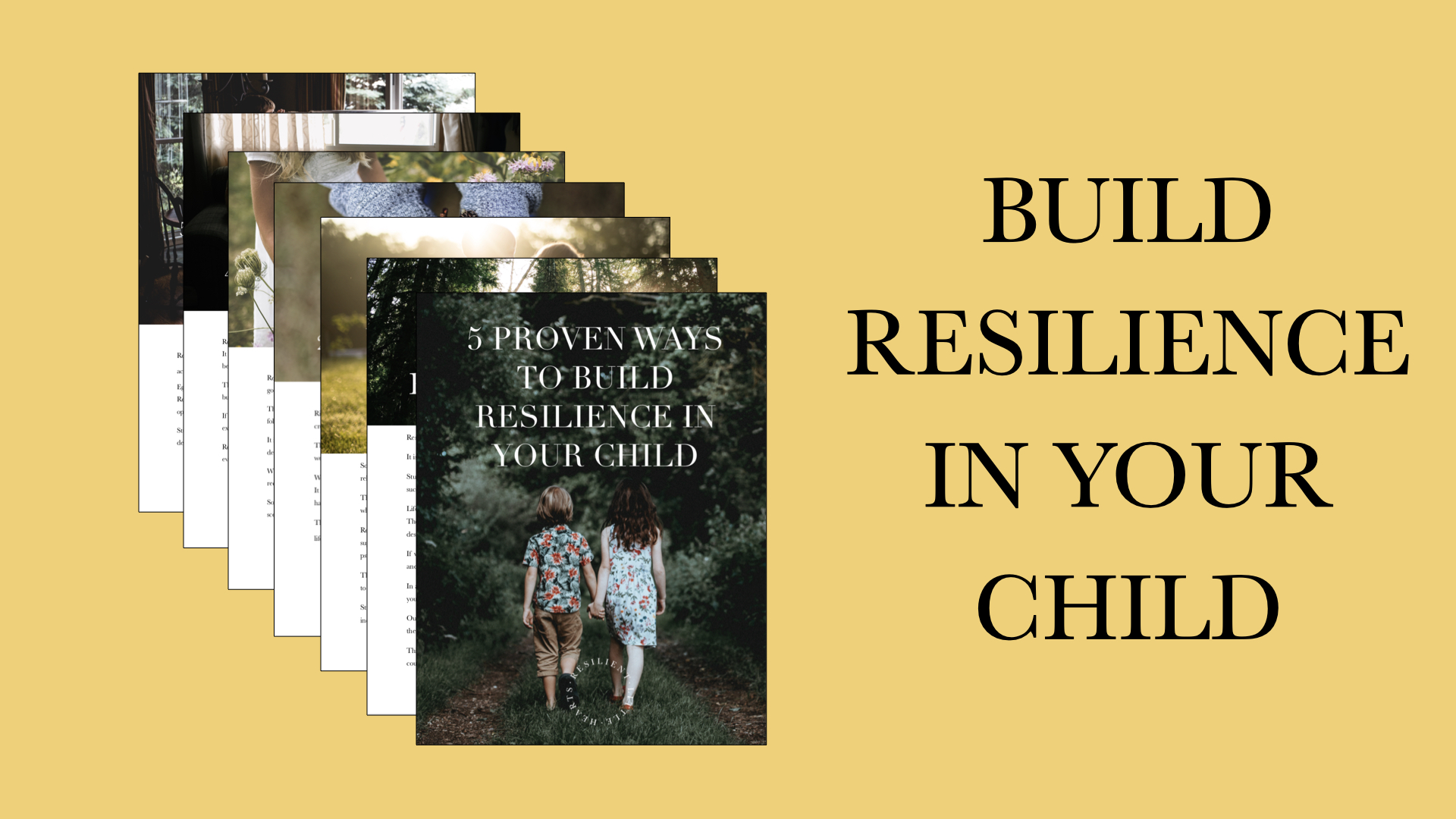Attachment & Childhood Development
The close emotional bond between a baby, and its mother or father, is one of the most beautiful relationships. Before we become parents we often daydream about these special moments of connection that we will experience with our new baby. Yet it seems so natural and instinctual, that many times we don’t realize what a critical influence it is having on our child’s development.
Childhood attachment is one of the greatest predictors for future resilience & emotional health.
The relationship that you have with your child in their early years of life, is laying the foundation for their social and emotional development.
WHAT IS ATTACHMENT?
Attachment is the close, relationship bond between an infant & their primary caregiver (sometimes called the “attachment figure”).
This attachment relationship serves as an infant’s emotional regulation (because they cannot regulate their emotions themselves), & is necessary for a child’s normal social and emotional development.
Research has found that attachment is important for an infant’s stress regulation, as well as the development of their resilience as they grow.
This attachment bond is most important during an infant’s first and second year of life.
HEALTHY ATTACHMENT
There are 3 key elements for a parent to be aware of in order to create a healthy attachment bond with their infant.
For a child to experience secure attachment, parents need to be:
- Sensitive to their infant’s needs
- Responsive to their infant
- Stable and consistent presence in their infant’s life.
SIGNS OF HEALTHY ATTACHMENT
The signs of healthy and secure attachment in an infant or toddler (0-2 years) are:
- They desire your company more than that of strangers
- They are upset when you leave the room
- They look to you to be comforted
- They welcome you & engage you after your absence
- They explore their environment if you are safely nearby
- They engage in reciprocal interactions (eg. smiling when you smile, or playing peekaboo)
ATTACHMENT PARENTING PHILOSOPHY
The research about the importance of healthy attachment between an infant and caregiver, has led to the development of the attachment parenting philosophy.
This parenting philosophy suggests that in order to promote a parent’s sensitivity and responsiveness to their infant, it’s important to have continuous body closeness & touch.
Parents who practice attachment parenting place great importance on bonding during the birth experience, breast-feeding, wearing your baby during the day, & co-sleeping with your baby at night.
While many of these practices do promote a close attachment between a parent and a child, it is important to note that there is no current research to show that those who practice attachment parenting have children who are more securely attached, than parents who have other parenting philosophies.
So although the approach is called “attachment parenting” (& can be wonderful if it works for your family), you do not have to practice all the elements of it, in order to create a healthy attachment with your child.
What is most important is that you remain sensitive & responsive to your infant’s needs.
THE ABSENCE OF HEALTHY ATTACHMENT
The absence of a healthy attachment relationship often leads to a behavioral profile called “Reactive Attachment Disorder” (RAD).
The signs of RAD in children are:
- unexplained withdrawal, fear or sadness
- listless appearance
- not seeking comfort, or showing no response when comfort is given
- failure to smile
- watching others engage socially, but showing no attempts to engage
- no interest in playing interactive games
- lack of eye contact
- indiscriminate affection with strangers
- destructive to self and others
The risk factors that lead to a child potentially developing RAD are:
- living in a children’s home or institution
- frequently changing foster homes
- parents with severe mental health problems, criminal behavior, or substance abuse
- prolonged separation from caregivers due to hospitalization or other extreme situation
The absence of a healthy attachment relationship in a child’s life, significantly affects their social and emotional development as they grow.
ATTACHMENT THEORY EXTENDED
Attachment theory has more recently been extended to suggest that the relationship pattern with our caregivers in the early years of life, determines how we interact in our adult relationships.
This means that what children experience as “normal” in relationship patterns, they will re-create and repeat when they are older.
Taken to an extreme, this theory sometimes suggests that any challenges an individual may be having is solely caused by the early experiences with their caregivers. While it’s important to understand the high influence early relationships have on an individual’s future resilience & emotional health, it is not the only contributing factor.
4 ATTACHMENT STYLES
Research has found there are 4 main attachment styles.
1.SECURE ATTACHMENT
This occurs when the caregiver is consistent, sensitive and emotionally available to the infant’s needs. In this situation, children are upset when their caregiver is absent & soothed by their return. They find comfort in the presence of their caregiver.
Children with secure attachment grow up to develop healthy relationships where they find emotional safety and stress regulation with people they trust.
2. AVOIDANT ATTACHMENT
This occurs when the caregiver is emotionally unavailable and unresponsive most of the time. In this situation, children learn to stop or suppress their emotions. Over time, they stop seeking closeness with their caregiver or even expressing emotions.
Children with avoidant attachment grow up to be emotionally unavailable in relationships. They often struggle to reach out, ask for help, or even develop supportive relationships.
3. ANXIOUS ATTACHMENT
This occurs when the caregiver is extremely inconsistent. They may be very attuned and responsive to their child’s needs at times, but completely insensitive and emotionally unavailable at other times. In this situation, children become confused and insecure because they don’t know what to expect. They also become overly clingy to their caregiver.
Children with anxious attachment grow up to be emotionally needy, clingy or co-dependent in relationships. They are often very insecure about whether their close relationships will love and accept them for who they are.
4. DISORGANIZED ATTACHMENT
This occurs when the caregiver is neglectful or abusive towards the child. In this situation, the child experiences the caregiver’s behavior as threatening, while also feeling dependent upon the caregiver for survival. When the caregiver is the source of a child’s distress, the child will often disassociate from themselves and detach from their experience.
Children with disorganized attachment grow up to be disassociated in relationships. They will either not have any close relationships (instead leaning into other areas of life, such as work), or they will be emotionally shut down from their close relationships.
WHAT TO DO IF YOUR OLDER CHILD DIDN’T HAVE A HEALTHY ATTACHMENT RELATIONSHIP
Whether it is due to extenuating circumstances with your own child, or you are raising an adoptive or foster child, you may have become aware that they didn’t develop a secure attachment relationship in their infant years.
It is important to remember that through creating a consistent, loving environment, (& therapy where needed), it is possible to bring healing to childhood wounds & even re-wire your child’s brain for healthy relationships.
Start by becoming aware of their childhood experiences so that you know what you are working with. If you are an adoptive or foster family, try to find out as much information as you can about their birth family & early experiences.
Then practice repeatedly being a stable, consistent presence in their daily life, being sensitive and responsive to their current needs.
Where there has been hurt or trauma, they will test you in these areas & expect you to fail. You will need to “prove” that you are remaining as this presence in their life, in order to develop trust within their relationship with you.
It’s important to remember that children who did not have secure attachment relationships are likely to be more anxious and reactive because they feel “threat” almost constantly. Do not force relationships or overwhelm them too quickly. Also, depending on some children’s background, allow them to be the ones to initiate healthy physical touch.
SUPPORTING NEW PARENTS
For the majority of new parents, how sensitive and responsive they are to their infant’s early needs are determined by their own mental and emotional health, and levels of stress in their personal lives.
As a community we need to encourage new parents and provide support systems, so that they can meet the demanding needs of their new baby.
As a new parent, it’s important to intentionally consider your own commitments and stress levels in the early years of your child’s life. Where it is within your control, try not to push yourself into stressful situations during this time, & get support with any mental health issues you may be experiencing.
Looking after an infant may feel like mundane, anonymous, insignificant work at times. But these small moments, repeated across the days and months are creating strong emotional bonds of healthy attachment, that will strengthen your child’s resilience and emotional health in later life.












